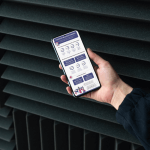In today’s fast-paced digital era, having a robust and scalable ecommerce platform is crucial for success. The headless architecture is a relatively new approach in the ecommerce industry that has been gaining immense popularity due to its ability to provide improved scalability, flexibility, and customization.
In this article, we will explore the benefits of a headless content management system (CMS) and front-end for ecommerce. We will delve into the advantages of this architecture for scalability, security, performance, personalization, and customer experience. Join us on this journey as we explore how to build a scalable headless ecommerce platform that can take your business to new heights.
The growing popularity of headless architecture in ecommerce
What is a headless CMS and a headless front-end?
To understand what a headless CMS and a headless front-end are, it’s helpful to first have a basic understanding of them.
A content management system (CMS) is a software application that allows users to create, manage and publish digital content, usually for a website or mobile app. A CMS typically includes a back-end (or admin panel), which is where users can manage the content.
The front-end of a website or app is the part that users see and interact with. It includes the design, layout, and functionality of the site, as well as any interactive elements, such as forms or buttons.
Now, let’s talk about the headless aspect. In a traditional CMS, the front-end and back-end are tightly coupled, meaning that any changes made to the back-end affect the front-end. With a headless CMS, however, the e-commerce back-end and front-end are decoupled, and the CMS is an entirely separate service-connected loosely to the back-end and front-end via APIs. This allows for greater flexibility and customization, as businesses can choose the best tools and technologies for their unique needs.

The rise of headless
Headless has been on the rise for several years now. More and more companies, from large multinationals to small independent e-tailers have adopted this e-commerce architecture. This increase in popularity is a direct response to the changing needs of today’s online shoppers. As customers expect more personalized, responsive and engaging digital experiences, businesses need to find ways to keep up.
According to Salesforce’s 2022 State of Commerce report, 80% of businesses plan to implement headless architecture by 2024. The report notes that the shift to headless architecture is being driven by the need for businesses to be more agile and flexible, and to provide more personalized and engaging experiences to their customers.
Additionally, a 2020 survey by Wunderman Thompson found that 76% of respondents said that their company has either already adopted Headless commerce, or plan to do so within 12 months.

The benefits of a headless CMS and front-end for ecommerce
A headless CMS and front-end can offer a range of benefits for ecommerce businesses looking to improve their online presence and provide better customer experiences. Here are some of the key benefits:
- Improved scalability: scale your website more easily, by adding or removing features and integrations without having to make changes to your entire platform. Adapt to changing customer needs and market trends without having to worry about the limitations of a monolithic platform.
- Enhanced flexibility and customization: With a headless CMS and front-end, you can create a more customized and personalized experience for your customers. The decoupled nature of a headless architecture will allow you toselect the best CMS for your needs, and customize your storefront to match your brand requirements.
- Increased security: E-commerce security is improved by reducing the risk of vulnerabilities in the front-end affecting the back-end. The decoupled architecture ensures any security breaches in the front-end don’t affect the CMS or the data stored in it, reducing the risk of data loss or theft.
- Better performance and faster loading times: Faster loading times is crucial for an ecommerce. A headless front-end will load faster as it only has to display the elements required for the page, rather than the entire platform.
- Improved personalization and customer experience: By using a headless CMS, businesses can use customer data to provide more relevant content and recommendations, while a customizable front-end can provide a more immersive and intuitive user experience.

Did you know M-Commerce will be dominating in the coming years?
Building a scalable ecommerce platform with a headless approach
Here are a few key steps to keep in mind.
Choosing the right headless CMS
The first step is to research headless CMS solutions to find the service that matches your need. There are many options available, including Contentful, Prismic, and Strapi, each with its own set of features and benefits. It’s important to consider factors such as ease of use, flexibility, and integration capabilities when selecting a CMS that will help you achieve your business goals.
Integrating with other systems and platforms
With a headless ecommerce platform it is easier to implement other services, and this is important for achieving scalability. For example, the integration of a marketing automation service to deliver personalized recommendations to your customers, or a customer relationship management (CRM) system to track customer behaviour is now a consideration independent of the back-end or CMS choice.
Developing a flexible and customizable front-end
A flexible and customizable front-end is crucial for providing a seamless and engaging user experience for your customers. This can be achieved through the use of technologies such as React or Angular, which allow for highly customizable and modular front-end development.
Best practices for implementing a headless approach
Finally, there are a few best practices to keep in mind when implementing a headless approach to ecommerce. For example, it’s important to ensure that the front-end and back-end are communicating effectively and that you have a robust testing and quality assurance process in place to catch any issues before they affect the user experience.
In summary, building a scalable ecommerce platform with a headless approach requires careful consideration of the right CMS, integration with other systems and platforms, development of a flexible and customizable front-end, and adherence to best practices for implementation. By following these steps, ecommerce businesses can build a platform that is highly scalable, personalized and engaging for their customers.
